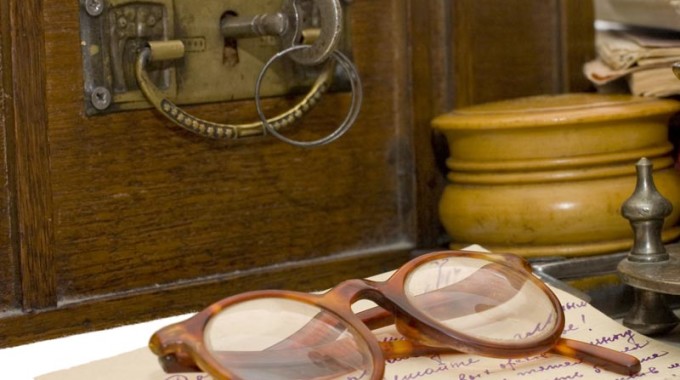As a thought leader, you may be great at telling stories through a presentation deck,…
The Hermit and the Evangelist
Hidden away, cunningly
Vinnie went into her sister’s room after the funeral and discovered a mysterious, locked chest. She’d planned to gather her reclusive sister’s papers and burn them—as she’d promised she would do. But when she unlocked the chest, she discovered a treasure which would alter her life and change the world.
The chest contained forty handwritten and hand-sewn manuscripts containing some eight hundred poems. Vinnie knew that her reclusive sister had written some poems, a few had even been published anonymously, but they never received much attention.
On that day, Vinnie broke her promise to her “Emily.” Instead of burning the poems, she decided with a “Joan d’ Arc” fervor, that they must be shared with the world. Livinia “Vinnie” Dickinson spent the next thirteen years evangelizing the poetry of her sister, Emily.

If Vinnie hadn’t seen the beauty in her sister’s poems; if she decided to toss them into the flames; if she didn’t push to get them published—then one of the greatest American poets would have quietly passed, virtually unnoticed, from the world.
The brain is wider than the sky
Now, you might think that Emily Dickinson’s locked chest of masterpieces is a once-in-history aberration. However, after working with thought leaders for many years, I’m convinced that the “hidden treasures in the attic” problem occurs more frequently than we might think.
Artists, visionaries, and thought leaders bring value because they can see the world in a different way. But these insights do not come quickly or easily. Many thought leaders recognize that in order to develop their ideas they need intensely quiet periods—time where they can step back from the world and think. Few thought leaders are as reclusive as Emily Dickinson (or if so, we haven’t met them!)
Great ideas remain unpublished and unseen for many reasons. Here are three common reasons that I’ve seen thought leaders hoard their “treasures in the attic.”
Luck is not chance, it is toil
In both 19th Century Amherst, Massachusetts and contemporary society, there’s an inherent tension between roles of the reflective thinker and the social evangelist. Let’s look at it in today’s terms.
Both roles require skill and disciplined effort. It’s exceptionally hard for any one person to excel at both roles simultaneously. Yet, both roles are necessary to make a meaningful impact in the world.
Vinnie could not have written great poetry. Emily, who rarely left the upstairs room of her family’s home, would have made a poor evangelist.
The soul selects her own society
If you enjoy the role of the thinker, take a look through your “treasures in the attic.” Why did you set these projects aside?
- Did intellectual curiosity pull you in another direction?
- Are you uncomfortable with evangelizing your work?
- Are you simply running short on time?
Don’t count on your hidden gems getting saved from the fire. Take the time to consider who will lead your thought leadership evangelism and promote your ideas to the world.









